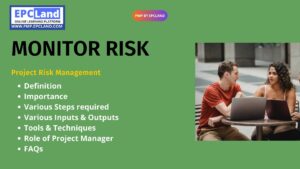Question 1:
What is the first step in the risk management process?
Explanation: The first step in the risk management process is risk identification. This involves identifying potential risks that may affect the project's objectives.
Question 2:
What is the purpose of a risk register?
Explanation: The purpose of a risk register is to track identified risks and their characteristics, assign responsibilities for risk response actions, and document the outcomes of risk analysis. It serves as a central repository for managing and monitoring project risks.
Question 3:
What is the main objective of qualitative risk analysis?
Explanation: The main objective of qualitative risk analysis is to prioritize risks based on their potential impact and probability. It helps in focusing efforts on managing high-priority risks and developing appropriate response strategies.
Question 4:
Which risk response strategy involves transferring the risk to a third party?
Explanation: The risk response strategy that involves transferring the risk to a third party is risk transfer. It typically involves the use of insurance, warranties, or contracts to shift the financial impact of the risk.
Question 5:
What is the purpose of risk monitoring and control?
Explanation: The purpose of risk monitoring and control is to track identified risks and their characteristics, assess the effectiveness of risk response strategies, and identify new risks to update the risk register. It ensures that the project's risk management processes remain effective throughout the project lifecycle.









